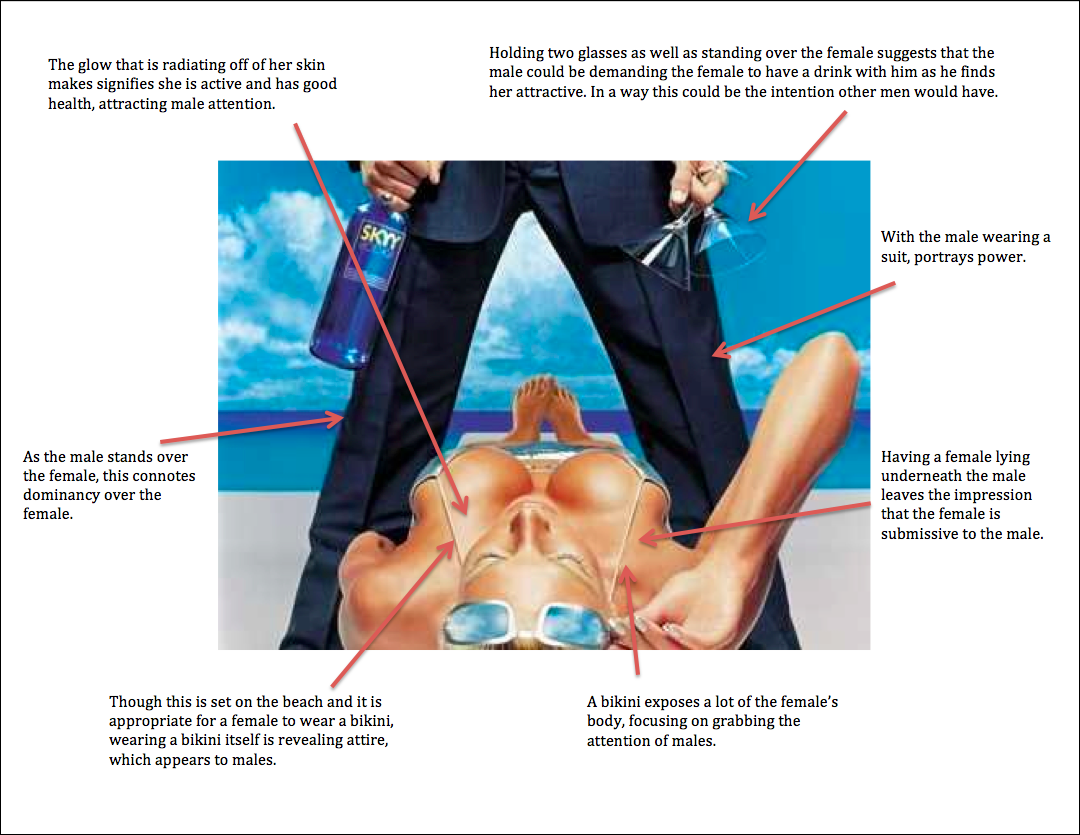
Wednesday, 6 December 2017
Mulvey's Male Gaze Theory
Laura Mulvey's Male Gaze theory states that in an industry dominated by male associates, producers turn the camera into a heterosexual man, in order to appease the audience by sexualising women using camera, lighting, and sound techniques. This is often seen in films and adverts when they use attractive women and use them to turn non-sexual situations into scenarios with a sexual undertone. Despite the male gaze theory majorly being used to appeal to men, it can also be used in an attempt to appeal to women. Through the lens of the camera, women will see effectively what the male looks for in women, and therefore they will take influence on how they act and what they wear based on how they want men to see them. It can affect women in a way that women want to see themselves. A study has shown that 60% of heterosexual women have admitted to regularly being attracted to other women - reinforcing the validity of the male gaze theory. Mulvey's theory was created in 1975 when she made the statement that in order to watch a film, the audience has to be put in the position of a heterosexual male in order to enjoy it fully. It is often presented in the camera movement, the camera often lingers on the body of the female almost in the way a man would look a woman up and down. The shots used are often longer takes and this is done to prolong the pleasure of looking, known in media terms as scopophilia.


Subscribe to:
Post Comments (Atom)
No comments:
Post a Comment